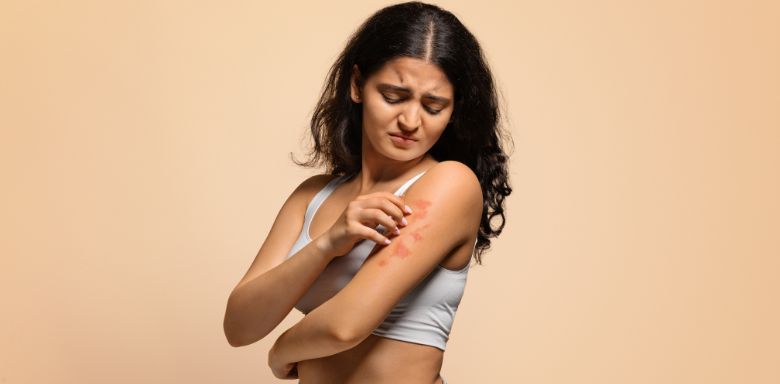Early, Common and Uncommon Symptoms of Psoriasis Explained
Psoriasis is a chronic autoimmune condition that causes the rapid buildup of skin cells, resulting in scaling, inflammation and discomfort. While most people associate psoriasis with red, flaky patches on the skin, the symptoms can vary greatly depending on the type and severity of the condition. Let's take a look at how to spot symptoms of psoriasis, and when to see a doctor..
What Does Psoriasis Look Like in Early Stages?
Psoriasis often begins gradually, and many people may not recognize it at first. Early symptoms can appear on areas like the elbows, knees, scalp or lower back and may include:
- Small, red bumps that may be mistaken for a rash or insect bites.
- Slight itching or burning in localized patches.
- Dry or flaky skin that doesn’t improve with moisturizer.
- Minimal scaling that may increase over time.
In some cases, the affected skin may crack or bleed as the condition progresses. It’s important to note that early psoriasis can look different for every person and may be confused with eczema, dandruff or other skin conditions.
Common Symptoms of Psoriasis
As psoriasis develops, its signs become more noticeable. The most typical form, plaque psoriasis, causes the following symptoms:
- Thick, red patches of skin covered with silvery-white scales.
- Itching, burning or soreness in affected areas.
- Dry, cracked skin that may bleed.
- Thickened or ridged nails (nail psoriasis).
- Scaly scalp that may resemble severe dandruff.
These patches can range from small, localized areas to widespread plaques covering large parts of the body.
Uncommon Symptoms of Psoriasis
While most people experience skin-related symptoms, some lesser-known or rare forms of psoriasis present in other ways:
1. Inverse Psoriasis
This type affects skin folds like under the breasts, around the groin and under the arms. Instead of flaky scales, it causes smooth, shiny, red patches and can be very painful due to friction and sweat.
2. Guttate Psoriasis
Common in children and young adults, this form appears as small, red, drop-shaped spots on the torso, arms and legs. It may be triggered by strep throat or other infections.
3. Pustular Psoriasis
This rare but severe type causes white, pus-filled blisters surrounded by red skin. It may appear in isolated areas (like palms and soles) or spread across the body.
4. Psoriatic Arthritis
Some people with psoriasis can also develop psoriatic arthritis. This can cause joint pain, stiffness and swelling, especially in fingers and toes. It may appear before or after skin symptoms.
When to See a Doctor
If you notice unusual or persistent skin changes—especially dry, scaly or itchy patches—it’s a good idea to consult a healthcare provider. You should seek medical advice if:
- Your skin symptoms don’t improve with over-the-counter creams or moisturizers.
- You're experiencing joint pain or stiffness along with skin changes.
- You notice pitting, discoloration or detachment of your nails.
- Your symptoms are affecting your sleep, daily life or emotional wellbeing.
- You're unsure whether your rash is psoriasis or another condition.
A dermatologist can diagnose psoriasis through a physical exam and, in some cases, a skin biopsy. Once diagnosed, there are many treatments available, from topical creams and light therapy to oral medications and biologics that target the immune system.
Final Thoughts
Psoriasis is more than just a skin condition. It can impact your physical comfort, confidence and quality of life. Recognizing the early signs and understanding the range of symptoms can help you get the treatment you need sooner. If you suspect you may have psoriasis, don’t wait. Early diagnosis and treatment can make a big difference in managing symptoms and preventing complications.
